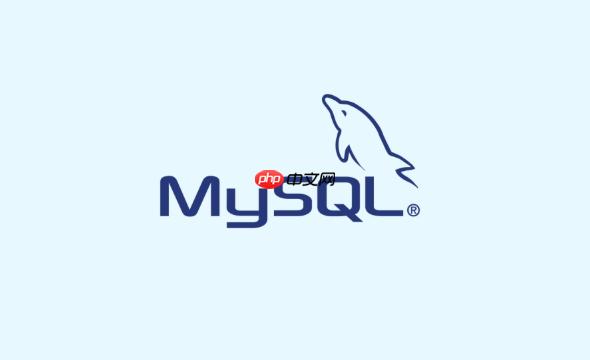答案:MySQL权限问题主要通过错误日志排查,常见错误包括用户访问被拒、主机不允许连接、密码过期等,需结合SHOW GRANTS、mysql.user表查询、网络测试及配置文件检查进行综合分析定位。

MySQL权限问题,说到底,很多时候就是一场“对不上号”的误会。而要解开这个误会,日志无疑是最直接、最可靠的线索。核心在于,当用户尝试连接或执行操作失败时,MySQL并不会默默承受,它会把这些“拒绝”记录下来,尤其是在错误日志中,这些记录就是我们定位问题的金钥匙。
排查MySQL权限问题,我的经验告诉我,首先要从错误日志(Error Log)入手。这是服务器端记录所有异常、警告和错误的地方,权限拒绝往往会在这里留下清晰的痕迹。
步骤是这样的:
SHOW VARIABLES LIKE 'log_error';
tail -f /path/to/mysql_error.log
Access denied for user 'username'@'host' (using password: YES/NO)
Host 'hostname' is not allowed to connect to this MySQL server
user 'username'@'host'
to database 'dbname'
for command 'command_type'
SELECT
INSERT
username
host
SHOW GRANTS FOR 'username'@'host';
mysql.user
SHOW GRANTS
SELECT user, host, authentication_string FROM mysql.user WHERE user='username';
Host 'hostname' is not allowed to connect
mysql.user
iptables
firewalld
在排查MySQL权限问题时,错误日志是我们的第一手资料。它会以相对直接的方式告诉你,哪里出了问题。常见的权限错误信息通常围绕着“拒绝访问”这个核心展开,但具体原因会略有不同:
Access denied for user 'your_user'@'your_host' (using password: YES)
your_host
your_user
your_user
mysql.user
your_host
your_user
your_user
host
your_host
'test_user'@'localhost'
192.168.1.100
caching_sha2_password
mysql_native_password
Access denied for user 'your_user'@'your_host' (using password: NO)
Host 'your_host' is not allowed to connect to this MySQL server
mysql.user
your_host
bind-address
your_host
Your password has expired. To log in you must change it using a client that supports expired passwords.
User 'your_user' has no privileges on database 'your_db'
SELECT
INSERT
UPDATE
your_user
your_db
理解这些错误信息的细微差别,能帮助我们更快地缩小问题范围。
要让MySQL的日志成为你排查权限问题的得力助手,合理地配置它们是关键。虽然错误日志默认开启且非常有用,但有时我们需要更详细的信息。
my.cnf
my.ini
log_error = /path/to/mysql_error.log
my.cnf
general_log = 1
general_log_file = /path/to/mysql_general.log
SET GLOBAL general_log = 'ON';
SET GLOBAL general_log_file = '/path/to/mysql_general.log';
slow_query_log = 1
slow_query_log_file = /path/to/mysql_slow.log
long_query_time = 1
配置示例(my.cnf
[mysqld] log_error = /var/log/mysql/error.log # 如果需要详细跟踪所有SQL,临时开启通用查询日志 # general_log = 1 # general_log_file = /var/log/mysql/general.log
记住,每次修改
my.cnf
general_log
SET GLOBAL
日志固然重要,但它们只是记录了“发生了什么”。要真正解决问题,我们还需要结合其他工具和方法,从不同维度去核实和验证。
SHOW GRANTS FOR 'user'@'host';
SHOW GRANTS FOR 'user'@'%';
SELECT user, host FROM mysql.user;
FLUSH PRIVILEGES;
mysql.user
SELECT user, host, authentication_string, plugin FROM mysql.user WHERE user='your_user';
ping <mysql_server_ip>
telnet <mysql_server_ip> 3306
nc -vz <mysql_server_ip> 3306
telnet
nc
bind-address
bind-address
bind-address
127.0.0.1
GRANT ALL PRIVILEGES ON *.* TO 'your_user'@'your_host' WITH GRANT OPTION;
mysql_config_editor
.mylogin.cnf
mysql_config_editor print --all
auth_socket
综合运用这些方法,就像侦探多方取证一样,能让你更快、更准确地定位MySQL权限问题的根源。
以上就是mysql如何通过日志排查权限问题的详细内容,更多请关注php中文网其它相关文章!

每个人都需要一台速度更快、更稳定的 PC。随着时间的推移,垃圾文件、旧注册表数据和不必要的后台进程会占用资源并降低性能。幸运的是,许多工具可以让 Windows 保持平稳运行。

Copyright 2014-2025 https://www.php.cn/ All Rights Reserved | php.cn | 湘ICP备2023035733号